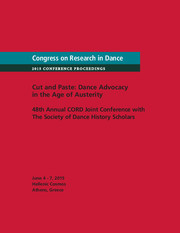No CrossRef data available.
Article contents
A Felt Authentic Grounding: Intersecting Theories of Authenticity and Tradition
Published online by Cambridge University Press: 04 January 2013
Abstract
Together, “authenticity” and “tradition” are embedded in cultural expressions at particular historical moments, and both are inherently fluid as they shift and bend over time. This paper examines these intersections, shifts, and bends by exploring a number of current theoretical approaches to the topics of authenticity and tradition. The author places them first in context with her own fieldwork and then moves on to an underpinning of the three subsequent papers that comprise this panel.
- Type
- Research Article
- Information
- Copyright
- Copyright © The Author(s) 2007


